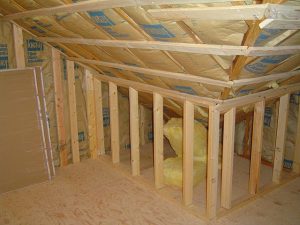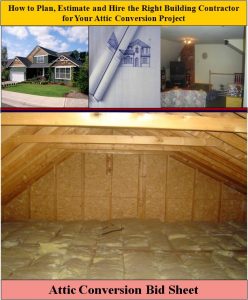What are the Leading Causes of Moisture in Attic
By Mark J. Donovan
|
|
Question: Hi Mark. I was hoping not to have to contact you, but here I am as I have an attic moisture problem. I have read your articles in our local paper over the years. Fortunately I saved one with your contact information in it, as I now need your help. Long story short, I have a 4 year old colonial. About 2 years ago I insulated the 3rd floor attic to make a finished room on one side and storage on the other. Since I completed the work I’ve had a recurring attic moisture problem. The insulation is actually wet on the cold side.
I have had many people tell me how to insulate the knee walls slopes and the ceiling, and I’ve tried many different ways but apparently none of the methods I’ve tried seem to work. |
I just noticed again wet insulation in the unfinished cold side of the attic, after just this past spring redoing the insulation again a different way. Any ideas on what could be causing this problem would be appreciated it.
| Answer: Ned, sorry to hear about your attic moisture problem. It sounds like you have warm moist air working its way up from the lower levels of the home into the 3rd floor. From there it is working its way into the cold area of the attic, and finally into the insulation, where it is condensing.
To solve this problem you really need to prevent that warm moist air from hitting the cold area of the attic, or having a way to vent the moist air out of the unfinished attic space. You’re going to either need to install an air-tight door between the finished and unfinished spaces, or vent the entire space to get rid of the hot moist air that is entering the attic. |
 |
I doubt you want to do the latter as the finished space will need to be very cold. Also, I assumed you installed insulation in the rafters when you insulated the attic.
In the process, did you make sure to use rafter vents so that air could migrate upwards from the soffit vents to the ridge vent. Rafter vents prevent insulation from choking off air that should normally move from the soffit vents to the ridge vent. The attic vent system is important for keeping the attic area cool and dry, even if it’s simply the small pockets of air between the insulation and the back side of the roof sheathing.
Also, I’ve seen cases where windswept rain can work its way into and under ridge vents, and then drip down the roof sheathing and rafters.
For help on Attic Conversion and Attic Renovation Projects, see HomeAdditionPlus.com’s Attic Conversion Bid Sheet. The Attic Conversion Bid sheet will help to ensure that you hire the right contractor so that your attic conversion project is built correctly, on time and budget.
Related Information
- Framing an Attic Addition
- The Importance of Properly Working Soffit Vents
- Finishing Attic Space above a Garage
Additional Attic Conversion and Home Remodeling Design Resources
 |
 |
Free Home Addition / Attic Conversion Price Quotes with No Obligation!
Fill out our 3-5 minute quick and easy form, and receive a free price quote on a attic conversion from one of our pre-screened and licensed home remodeling contractors. This process is free and there is no obligation to continue once you receive your attic conversion price estimate.

